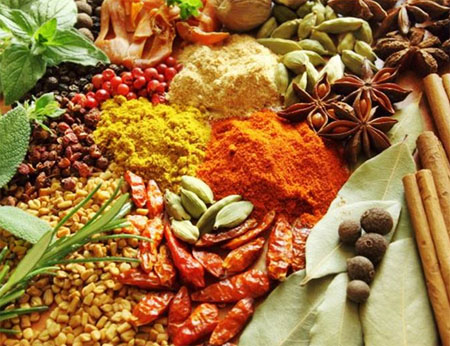Learning to cook with herbs and spices
By Catalogs Editorial Staff

Learning to cook with herbs and spices is an essential kitchen skill
Cooking at home is a fun and meaningful way to take care of yourself and nourish loved ones. Experimenting with new dishes and techniques will absolutely improve your kitchen skills, but it’s all about taste in the end. Learning to cook with herbs and spices is the number one way to boost the taste, aromas and appearance of your meals.
The more herbs and spices used in the kitchen, the better. Once you fall for these bold, delicate, peppery and sweet flavors, there?s no going back. It?ll completely transform your experiences in the kitchen. The smells alone will have neighbors knocking on the door, wondering what?s cooking.
Using fresh herbs on a side dish and understanding which spices enhance favorite ingredients is a huge step in every chef?s journey. At first it may seem like the possibilities are endless. You’ll be tempted to add a pinch of everything and wind up with more herbs on the plate than anything else. You may over season and will most likely create a few dishes that just don?t work, but it?s all part of the journey to becoming a better cook.
Most people have way more spices in their cabinet than they actually use. That?s okay, especially in the beginning when you?re just figuring out what you like. Gradually a dozen or so will rise to the front of the shelf as your go-to seasonings while the others will be relegated to supporting roles for certain dishes.
~
What?s the difference.
Herbs and spices often come from different parts of the same plant. The former are the leaves while the later is a combination of roots and seeds. For example, cilantro leaves come from the same plant as coriander seeds. They taste wildly different from one another, though both are staples in Indian cuisine, often used in the same dish.
Bring the flavors out to play
The first step of learning to cook with herbs and spices is practicing different ways to open up their flavors. Dried herbs will taste dull if you put some on your tongue. They need to be broken up with a pestle or your fingers and heated in liquid to brighten.
Use oil, butter or even water in a pan with dried herbs. This way the liquid will absorb the flavors and in turn infuse the meat, pasta or other primary ingredient. In general, you?ll use more when working with dried as opposed to fresh because the drying process reduces flavor. Fresh herbs are a seasonal treat guaranteed to help you cook better.
Spice things up
Adding spice doesn?t necessarily mean adding heat to a dish. The variety of flavor you?ll discover on the spice rack far exceeds the herb garden, plus they’re more potent so you only need to use a little. Experimenting with a new-to-you type of cuisine ? Indian, Chinese, Mexican ? is an excellent way to broaden your usage.
If you?re a baker, too, you?ll notice that cinnamon, nutmeg, cloves and cardamom work with both savory dishes and desserts, including apple muffins, pumpkin bread and beef. The more uses you find for a single ingredient, the more you?ll understand what it will bring to a dish before you add it!
Start with pinches
Avoid throwing away inedible food by only adding small amounts of seasoning at a time. One of the simplest ways to experiment is to add a new spice, say sumac or turmeric, to a familiar ingredient like pan of buttery potatoes or small pot of rice. In addition to getting a sense for the favor, you?ll notice how paprika or turmeric turns food a beautiful shade of red or yellow.
Sort favors to avoid clashes
Learning to cook with herbs and spices takes some time. Your palate and brain must work together to sample and sort so future experiments pleasantly surprise you. For instance, dominant flavors shouldn?t be combined with other dominant flavors (ginger, mustard, rosemary, cardamom). On the other hand, those with a medium level of flavor often go well together (garlic, oregano, thyme, fennel, turmeric). Fresh dill, parsley, chives and other herbs with delicate flavors can be used in larger quantities to balance bold dishes.
Cooking from scratch will produce marvelous results. Refer to cookbooks, magazines and food sites to find recipes that incorporate these new flavors.
Popular Savings Offers











